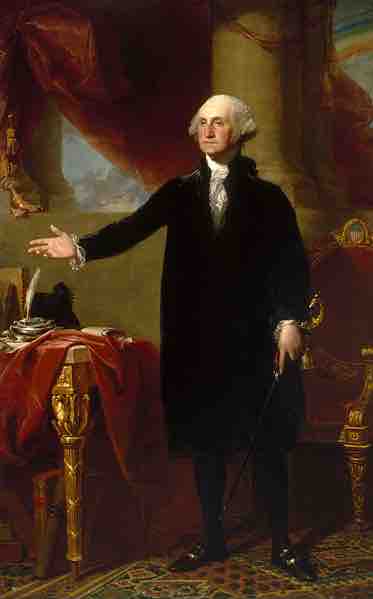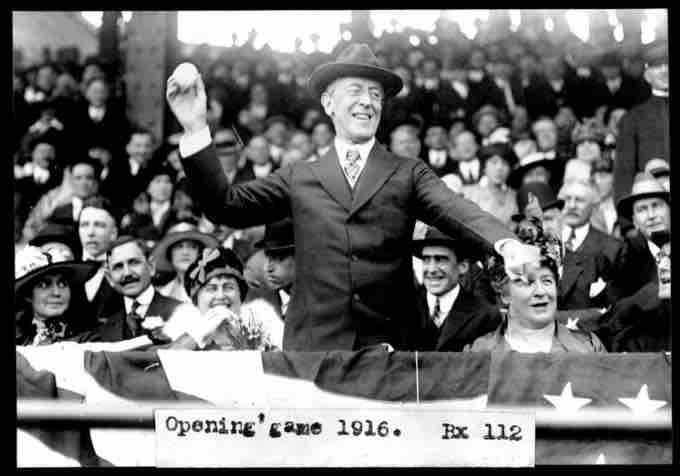Introduction
The President of the United States of America is the head of state and head of government of the United States. The president leads the executive branch of the federal government and is the commander-in-chief of the United States Armed Forces. Head of State is a term used in constitutional law, international law, political science, and diplomatic protocol to designate an official who holds the highest ranked position in a state and has the vested or implied powers to act as the chief public representative of a sovereign state. Heads of state in most countries are natural persons holding an office, however in some countries the head of state position is held by a body of persons .

World Head of States 1889
"The World's Sovereigns": A photo montage made in Europe in 1889 with the main heads of state in the world. As head of state, it is the job of each of these leaders to represent their countries.
A presidential system is a system of government where an executive branch is led by a president who serves as both head of state and head of government . In such a system, this branch exists separately from the legislature, to which it is not responsible and which it cannot, in normal circumstances, dismiss. Presidential systems are a notable feature of constitutions in the Americas, including those of the Argentina, Brazil, Colombia, El Salvador, Mexico and Venezuela; this is generally attributed to the strong influence of the United States in the region, and as the United States Constitution served as an inspiration and model for the Latin American wars of independence of the early 19th century.

George Washington
George Washington, the first President of the United States, set the precedent for an executive head of state in republican systems of government.
Presidential governments make no distinction between the positions of head of state and head of government, both of which are held by the president. Many parliamentary governments have a symbolic head of state in the form of a president or monarch. That person is responsible for the formalities of state functions, or in cases where the head of state has reserve powers, the "hands off" ensuing of a functional parliament, while the constitutional prerogatives of head of government are generally exercised by the prime minister.
Head of State in the United States
In the 1870s, in the aftermath of the impeachment of President Andrew Johnson and his near-removal from office, it was speculated that the United States, too, would move from a presidential system to a semi-presidential or even parliamentary one. Under this new system, the Speaker of the House of Representatives would become the real center of government as a quasi-prime minister. This did not in fact happen. The presidency, having been damaged by three late nineteenth and early twentieth century assassinations, and one impeachment, reasserted its political dominance by the early twentieth century through such figures as Theodore Roosevelt and Woodrow Wilson.
In presidential systems, such as that of the United States, appointments are nominated by the President's sole discretion, but this nomination is often subject to parliamentary confirmation (in the case of the US, the Senate has to approve cabinet nominees and judicial appointments by simple majority). Moreover, in presidential systems, the president often has the power to fire ministers at his sole discretion. In the United States, convention calls for cabinet secretaries to resign on their own initiative when called to do so.
Legislative Roles
It is usual that the head of state, particularly in parliamentary systems as part of the symbolic role, is the one who opens the annual sessions of the legislature, e.g. the annual State Opening of Parliament with the Speech from the Throne in Britain. Even in presidential systems the head of state often formally reports to the legislature on the present national status, e.g. the State of the Union address in the United States of America.
Ceremonial Roles
As head of state, the president can fulfill traditions established by previous presidents. William Howard Taft started the tradition of throwing out the ceremonial first pitch in 1910 at Griffith Stadium, Washington, D.C., on the Washington Senators' Opening Day. Every president since Taft, except for Jimmy Carter, threw out at least one ceremonial first ball or pitch for Opening Day, the All-Star Game, or the World Series, usually with much fanfare .

Wilson opening day 1916
U.S. President Woodrow Wilson throws out the ball on opening day of baseball season, 1916.
During a state visit by a foreign head of state, the president typically hosts a State Arrival Ceremony held on the South Lawn, a custom begun by John F. Kennedy in 1961. This is followed by a state dinner given by the president which is held in the State Dining Room later in the evening.